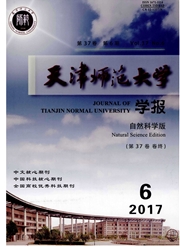

 中文摘要:
中文摘要:
为了解用氏啮小蜂的嗅觉分子机制,从其触角中分离出一种气味结合蛋白I,根据转录数据得到该蛋白的基因CcOBPl,通过构建系统发育树和分析密码子偏好性等研究该基因的进化关系.结果表明:周氏啮小蜂的CeOBPl基因长度为378bp,编码125个氨基酸,预测蛋白含有信号肽,位于第17位和第18位氨基酸之间.CcOBPl22条同源基因的平均KolKs值为0.499781,主要接受负选择.基于系统发育树的结果可知,周氏啮小蜂的CcOBPl蛋白与一些寄主广泛的寄生蜂(丽蝇蛹集金小蜂和多胚跳小蜂)的气味结合蛋白亲缘关系密切,与寄主单一的对叶榕传粉榕小蜂亲缘关系较远.比较周氏啮小蜂与10种昆虫CcOBPl基因11条序列密码子的偏好性和同义分异,发现周氏啮小蜂的G+c含量在第3位密码子和编码区较高,即周氏啮小蜂CcOBPl基因的密码子偏好性较高,同义分异也较高.
 英文摘要:
英文摘要:
To learn the olfactory molecular mechanism of Chouioia cunea Yang, a kind of odorant binding protein I was detached from the tentacles of C. cunea and its gene CcOBP1 was obtained according to the transcription data. Furthermore, the evolutionary relationship of CcOBP1 was studied by the method of constructing the phylogenetic tree and analyzing the codon usage bias. The results showed that the gene length of CcOBP! of C. cunea is 378 bp, which can encode 125 amino acids. The protein was predicted to involve signal peptide, which was located among the 17th and 18th amino acids. The mean value of Ka/Ks of 22 homologous genes of CcOBP1 was 0.499 781, and the gene mainly accepted negative selection. According to the phylogenetic tree, the CcOBP1 protein of C. cunea was close to the odorant binding proteins of some species of opius concolor with wide range of hosts (including Nasonia vitripennis Yang and Copidosoma floridanum), while its relationship with Ceratosolen solmsi marchali, which is a kind of opius concolor with single host, was relatively far. The codon usage bias and synonymous substitutions of 11 sequences of CcOBP1 of C. cunea were compared with 10 species of insect, and the results showed that the contents of G+C in the third codon and coding region were rather higher, that is, the codons of CcOBP1 of C. cunea had higher usage bias and the synonymous substitutions were rather higher as well.
 同期刊论文项目
同期刊论文项目
 同项目期刊论文
同项目期刊论文
 期刊信息
期刊信息
